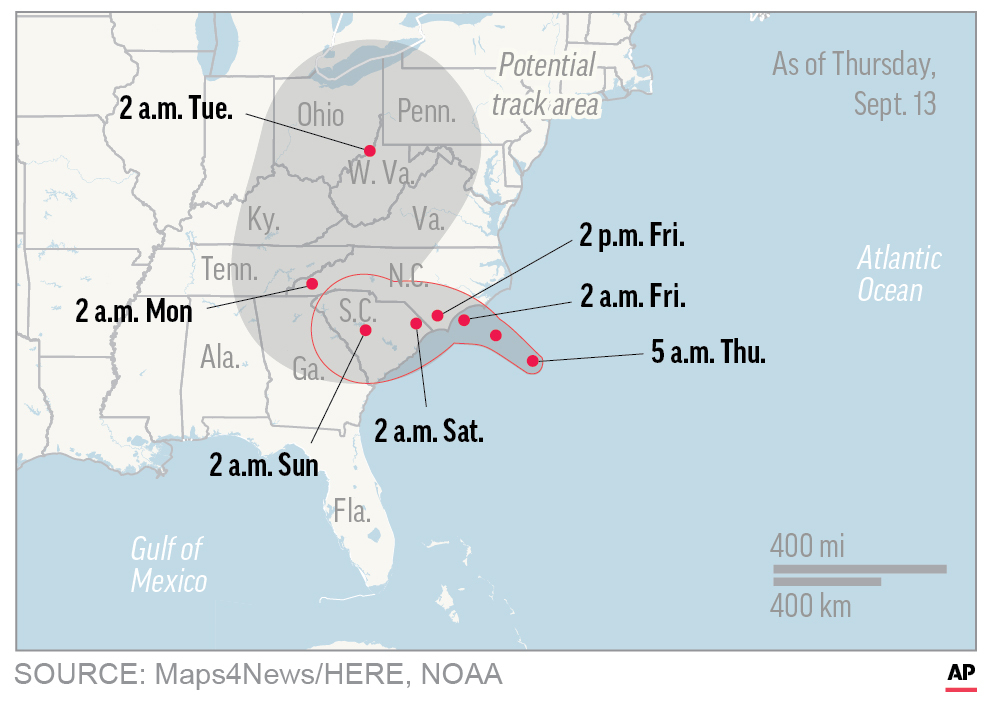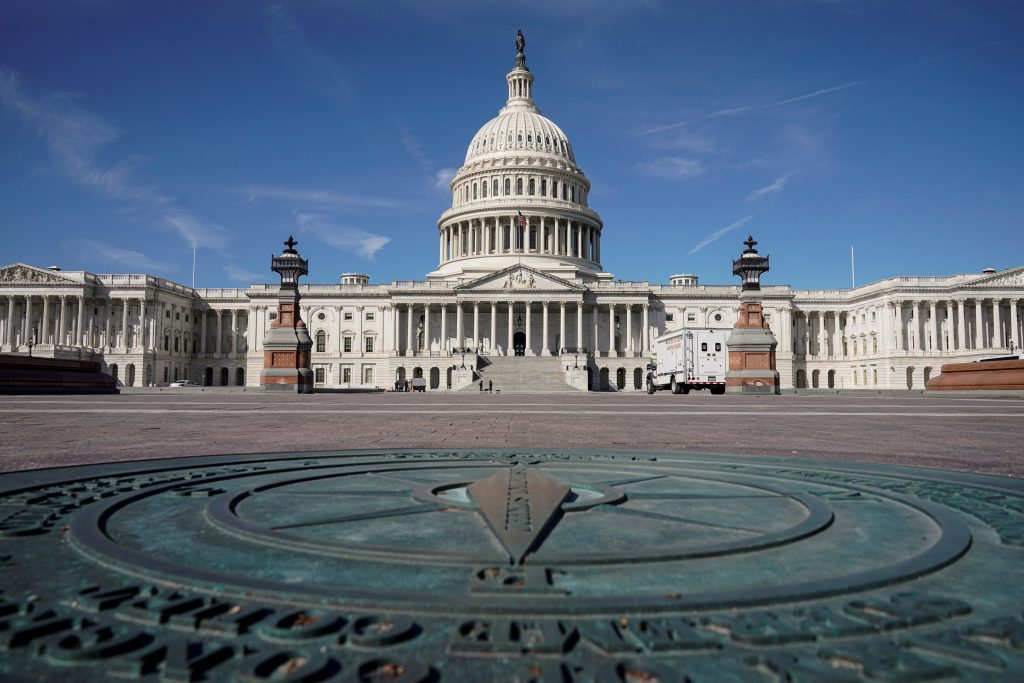Hurricane Florence’s Winds Start to Rake North Carolina Coast

Coastal North Carolina felt the first bite of Hurricane Florence on Thursday as winds began to rise, a prelude to the slow-moving tempest that forecasters warned would cause catastrophic flooding across a wide swath of the southeast.
The center of Florence, no longer classified as a major hurricane but a grave threat to life and property, is expected to hit North Carolina’s southern coast Friday, then drift southwest before moving inland on Saturday, enough time to drop as much as 40 inches of rain, according to the National Hurricane Center.
An estimated 10 million people live in areas expected to be under a hurricane or storm advisory, according to the U.S. Weather Prediction Center, and businesses and homes in the storm’s path were boarded up in anticipation. More than 1 million people had been ordered to evacuate the coasts of the Carolinas and Virginia and thousands moved to emergency shelters, officials said.
“There is still time to leave,” North Carolina Governor Roy Cooper told CBS on Thursday. “This is an extremely dangerous situation.”
Florence’s maximum sustained winds were clocked on Thursday at 110 miles per hour after it was downgraded to a Category 2 on the five-step Saffir-Simpson scale, according to the NHC.
The storm’s center was about 165 miles east of Wilmington, North Carolina, at 9 a.m. EDT but tropical storm-strength winds and heavy rains already were hitting North Carolina’s Outer Banks barrier islands.

Florence could bring wind-driven storm surges of seawater as high as 13 feet and NHC Director Ken Graham said on social media they could push in as far as 2 miles. Heavy rains were forecast to extend into the Appalachians, affecting parts of Alabama, Tennessee, Kentucky and West Virginia.
The storm will be a test of President Donald Trump’s administration less than two months before elections to determine control of Congress. After criticism for its response in Puerto Rico to last year’s Hurricane Maria, which officials there said was responsible for 3,000 deaths, Trump has vowed a vigorous response to Florence and defended his handling of Maria.
“3000 people did not die in the two hurricanes that hit Puerto Rico,” Trump said on Twitter. “When I left the Island, AFTER the storm had hit, they had anywhere from 6 to 18 deaths … Then, a long time later, they started to report really large numbers, like 3000.”
Trump provided no evidence to support his challenge.
The head of the Federal Emergency Management Agency, which is in charge of disaster response, has come under investigation over his use of government vehicles, Politico reported on Thursday.
Emergency declarations were in force in Georgia, South and North Carolina, Virginia, Maryland and the District of Columbia. Millions of people are expected to lose power and it could take weeks to resolve the outages.
Emergency preparations included activating more than 2,700 National Guard troops, stockpiling food, setting up shelters, switching traffic patterns so major roads led away from shore, and securing 16 nuclear power reactors in the Carolinas and Virginia.
To Read The Full Story
Are you already a subscriber?
Click "Sign In" to log in!

Become a Web Subscriber
Click “Subscribe” below to begin the process of becoming a new subscriber.

Become a Print + Web Subscriber
Click “Subscribe” below to begin the process of becoming a new subscriber.

Renew Print + Web Subscription
Click “Renew Subscription” below to begin the process of renewing your subscription.





